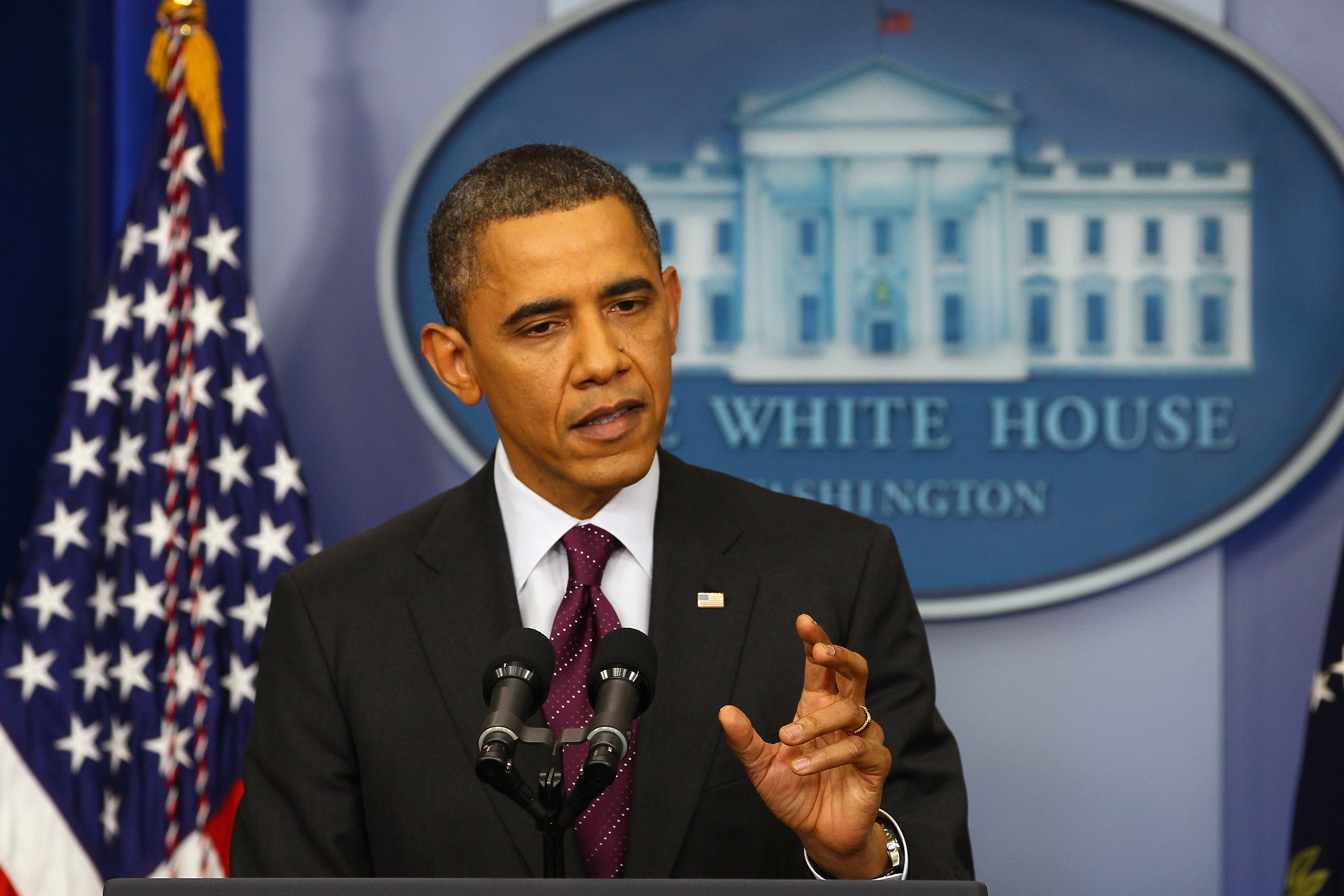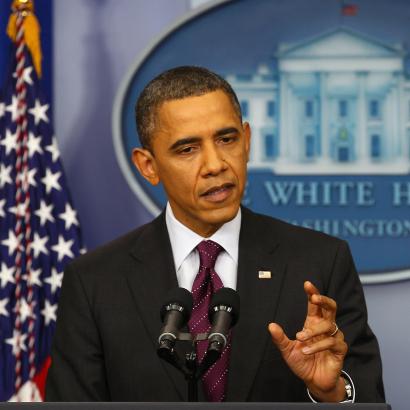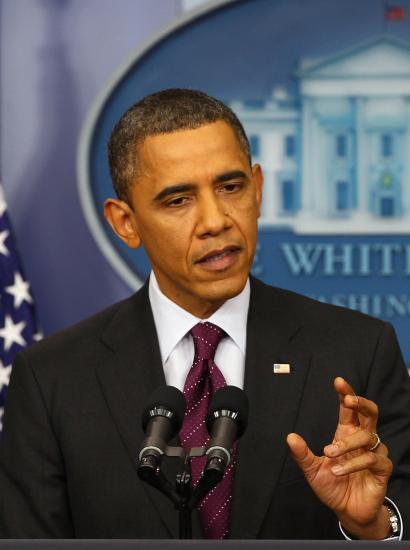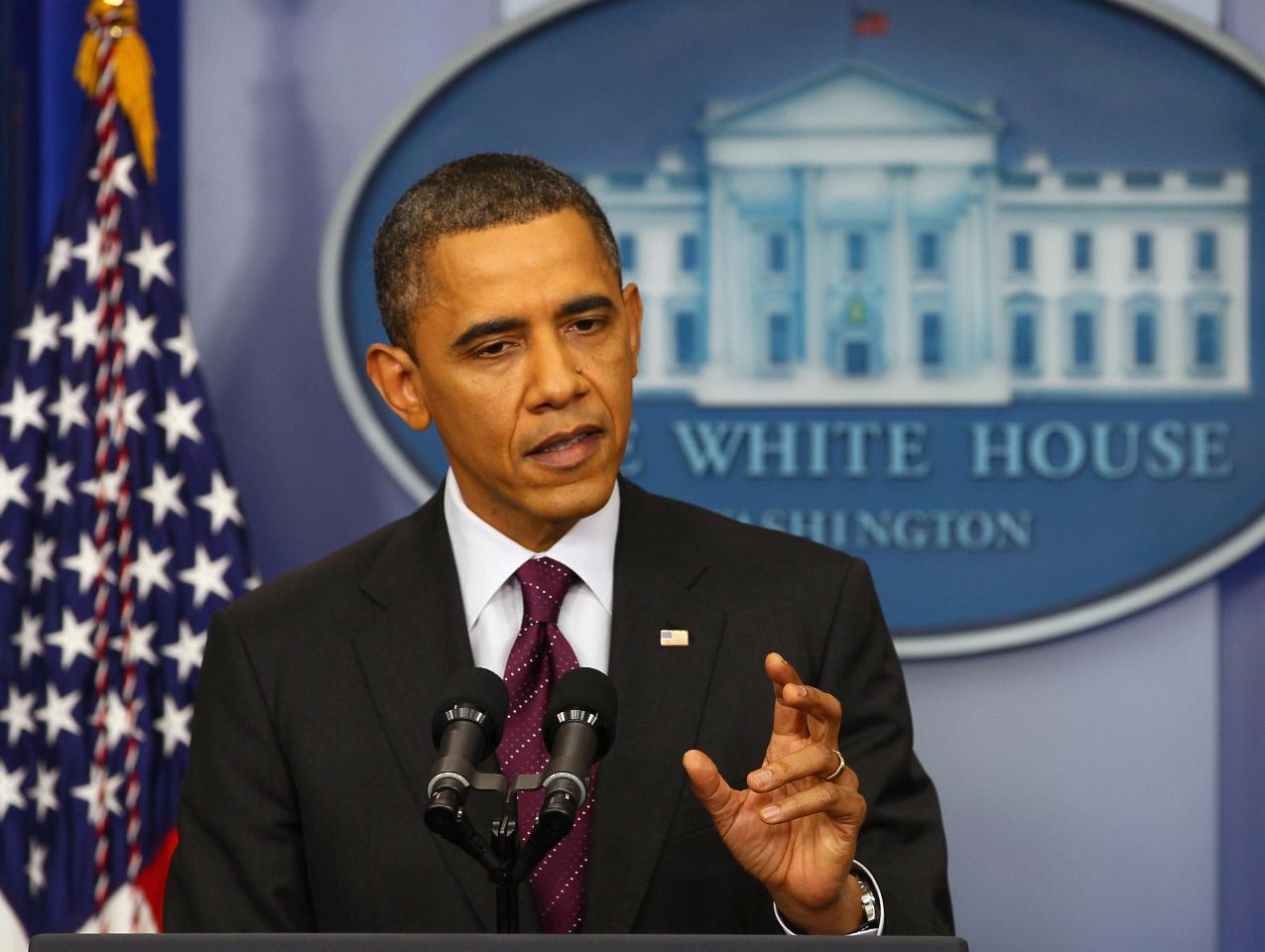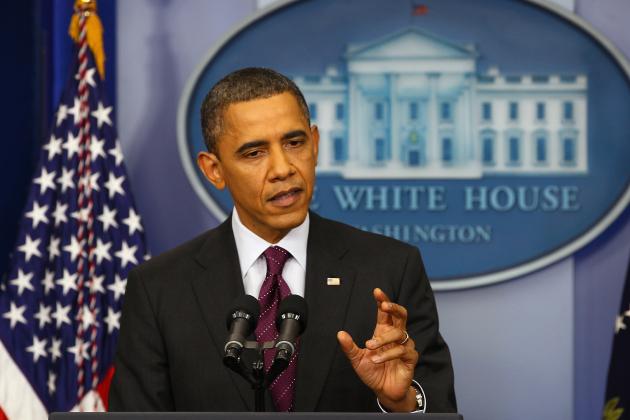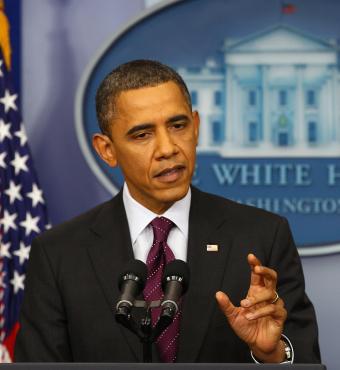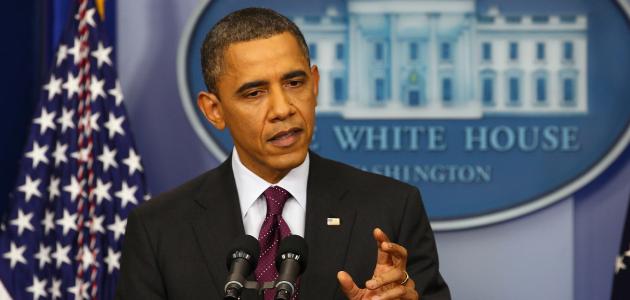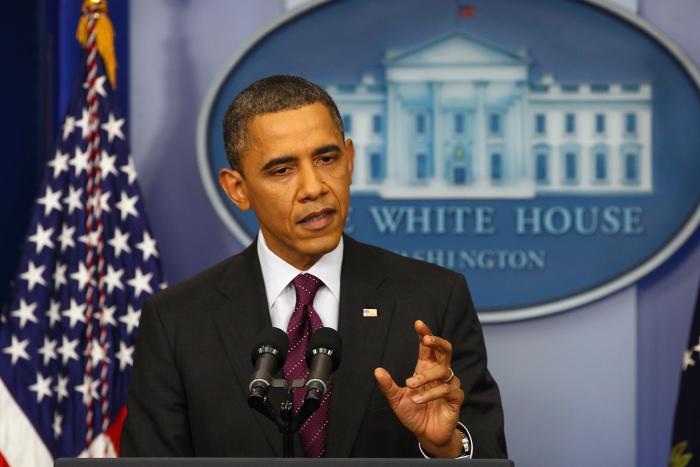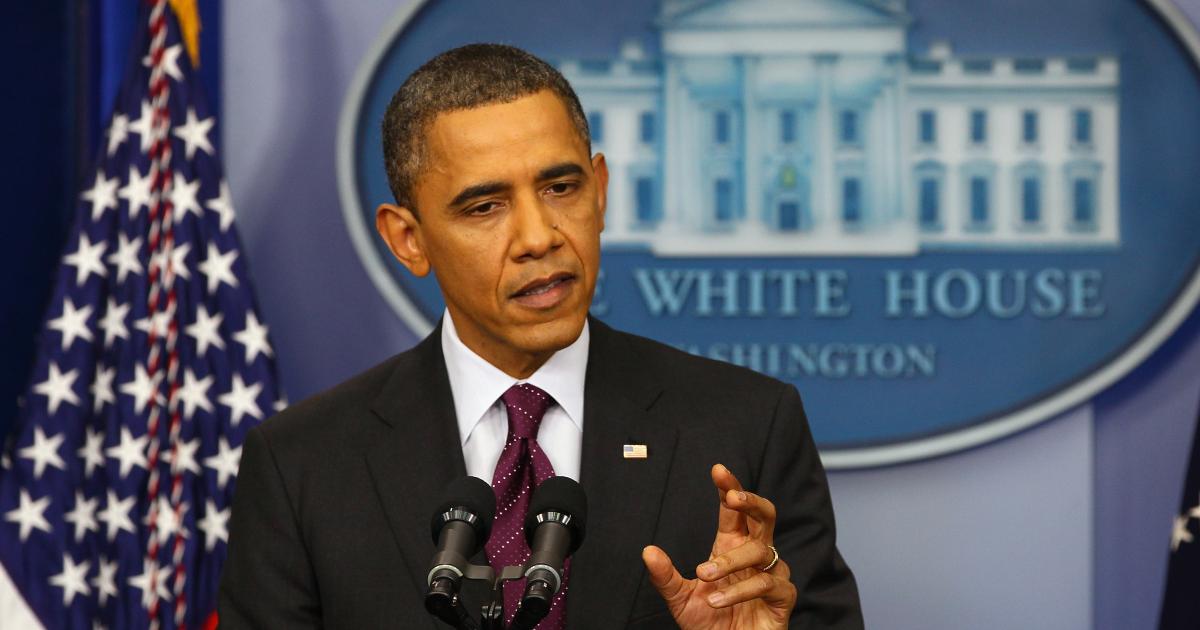- Politics, Institutions, and Public Opinion
The latest contribution to The New Yorker’s Annals of Law is a work of presidential hagiography by the indefatigably liberal legal journalist Jeffrey Toobin. It is titled, “The Obama Brief: The President considers his judicial legacy.” The interview, which is clearly timed for the midterm elections, recalls a similar softball interview between the President and Thomas Friedman in August 2014 on the President’s foreign policy. Both interviews gave the President every opportunity to articulate his positions to an admiring journalist. That tactic has fallen flat on its face in foreign affairs. So too, I believe, it will do on judicial appointments.
Toobin opens up his defense of Obama’s judicial legacy with a brief discussion of Halbig v. Burwell, decided in July 2014, where a divided panel of the United States Court of Appeals for the District of Columbia struck down, under the Affordable Care Act, Internal Revenue Service regulations that purported to allow individuals who purchased their health insurance on the federal exchanges to obtain substantial federal subsidies. To Toobin, the good news in the legal dispute over the employer mandate was that the newly liberal D.C. Circuit took the case in bank and thus voided the panel decision. That action, of course, only took place because of the four additional Democrats who had been handpicked by the President to serve as judges on the panel. Their confirmations were obtained because Senate Majority leader Harry Reid, with only three democratic defectors, had exercised the so-called “nuclear option,” so that it was no longer necessary to corral 60 votes in order to bring these presidential judicial nominations to the floor.
There are at least two serious gaps in Toobin’s mock-heroic account. The first concerns why the Democrats chose to exercise the nuclear option. Toobin recognizes that the same problem arose in 2005, when the Democrats used their 45 votes in the Senate to block the judicial nominations of President George W. Bush. Nonetheless, the Republicans declined to exercise the nuclear option but instead worked out a one-term compromise (Toobin wrongly writes as if it were still in effect today) that averted the overall crisis. The Democrats did not show a similar level of restraint by entering into another short-term deal. Toobin writes as if all the intransigence was on one side so that the President, driven in desperation, eventually acquiesced in the Senate decision.
Yet Toobin leaves unmentioned the institutional damage from unilateral action. The key point is that the 60-person vote for cloture was one of the few rules that mediated raw partisan politics across different Senate terms. Now that the dam has broken, it is highly unlikely that the Republicans will reinstate it voluntarily when, and if, they regain control of both the Senate and the Presidency in 2017. The upshot is an increased polarization of the courts overtime, as neither side will entertain political restraint given that it can no longer be reciprocated over time.
The second point goes to Toobin’s cavalier treatment of the merits in Halbig. Toward the conclusion of his presidential paean, Toobin briefly explains that Judge Thomas Griffith, writing for himself and Judge Raymond Randolph, relied on a simple “typographical error” when he read the statutory phrase “established by the state” to mean exactly what it said, that is, an exchange established by the state. Toobin insists that it was a common understanding of all parties to the legislative process that the subsidies would be available to all individuals whether they enrolled in both the federal and state exchanges.
Substantively, there is much to be said for that position, save for the fact that in the heat of partisan politics Congress did not enact it. In fact, there was precious little in the history that vindicates his assumption of a drafting glitch, and a very damning excerpt from M.I.T. Professor Jonathan Gruber says the exact opposite. Gruber and others have tried to dismiss his remarks as if they were a slip of the tongue. But that ex post apology is utterly inconsistent with Gruber’s statement, which shows that Democrats wanted the federal government “to sort of squeeze the states to do it. I think what’s important to remember politically about this, is if you’re a state and you don’t set up an Exchange, that means your citizens don’t get their tax credits.” The purpose was to use differential incentives to force reluctant states into the fold.
In and of itself, a single statement by a prominent presidential advisor ought not to be decisive. But it looms large when the administration’s position is that the words an “exchange established by a State” also covers an exchange that is “established by the federal government on behalf of a state.” As I have explained elsewhere, the statutory choice may well be regrettable, but it is a simple fiction to treat the federal government as a state, especially when it acts, not jointly with any state, but only after the state explicitly refuses to set up the exchanges itself. Indeed, much to my surprise, that passage was in fact quoted by District Court Judge Ronald White in Oklahoma v. Burwell on September 30, 2014, in which followed the D.C. Circuit panel decision. The issue is likely to make it up to the Supreme Court after all, notwithstanding the President’s effort to rig the game.
One reason why Toobin lays so much stress on this lopsided account is that he wants to lend credibility to the President’s most dramatic claim—namely, that the growing partisanship in American politics is the fault of the Republicans. “The bulk of my nominees, twenty years ago or even ten years ago,” said the President, “would have been considered very much centrists, well within the mainstream of American jurisprudence, not particularly fire-breathing or ideologically driven. So the fact that now Democratic appointees and Republican appointees tend to vote differently on issues really has more to do with the shift in the Republican Party and in the nature of Republican-appointed jurists. . . . Democrats haven’t moved from where they were.”
The point here is intended to explain the increased polarization of American politics, both on the court and off it, to a shift in Republican sentiments toward the radical right position. The President only looks at quality. There is no question that the President has chosen many strong Democratic nominees, most of whom passed without objection. But his global condemnation of Republicans could not be more incorrect when applied to Judge Griffith, the by-the-book Republican, who wrote Halbig. Griffith has no political agenda, let alone one that he would choose to express through his judicial opinions. Indeed, much to my intellectual frustration, he has often written decisions that are all too favorable to the government. These include his opinion in U.S. v. Regenerative Sciences, upholding the power of the FDA to regulate innovative surgical stem-cells procedures—joined by Harry Edwards and Sri Srinivasan, Democrats appointed by Presidents Carter and Obama respectively.
There are occasional conservative outbursts against the New Deal state, most notably by Judge Janice Rodgers Brown (joined by Chief Judge David Sentelle) in Hettinga v. United States, whose concurrent opinion probably picked the wrong forum to savage a grotesque marketing order under the Agricultural Adjustment Act of 1937. But they joined in a per curiam decision that upheld that government marketing order. Judge Griffith was the third member of that panel, and he expressly refused to join in their opinion. There is, lamentably, hardly any conservative judicial backlash against the powers of the regulatory state.
To put the point more generally, the massive polarization of the two political parties is beyond dispute. Today there is no Republican member of Congress who is more liberal than any Democrat, or any Democrat who is more conservative than any Republican. Surely some of the movement comes on the Republican side with the rise of libertarians like Rand Paul about whom I have expressed strong reservations on both domestic and foreign issues. But the hard question is determining who has moved. On this issue, a conventional graph seems to favor the Democrats, by showing little Democratic change over the past generation, matched by a sharp Republican lurch to the right. Yet this conclusion, which runs through 2010, misses much of the basic story by concentrating exclusively on roll-call votes without looking at the substance of the particular issues.
Thus, to turn to gay rights, to which Toobin devotes much time in his piece: in the political landscape of 1996, the Clinton Democrats were squarely behind the 1996 Defense of Marriage Act (DOMA), which allowed states to refuse to recognize same-sex marriages conducted in other states, and which refused to supply standard marriage benefits to same-sex couples. President Obama, Toobin relates, came to the conclusion that the Equal Protection Clause somehow required the constitutional recognition of same-sex marriages in May 2012. At that time, he decided that the Equal Protection Clause required striking down that particular ban. DOMA of course was struck down by the Supreme Court in United States v. Windsor in 2012 on a set of dubious technicalities, after which a succession of states have struck down traditional marriage on equal protection grounds. It is odd that the President should cite this history as an instance of allowing the democratic process to do its work. By now, the Democrats have shifted far to the left. Many Republicans have moved to the left by softening their political opposition to same-sex marriage. The gap may well have widened between the parties, but both, taken as a whole, to the left of where they were a generation ago. The standard index misses the profound substantive shift.
The same is true with respect to the minimum wage law. Republicans have rarely mounted a frontal assault on minimum wage laws, but they have generally sought smaller increases than the Democrats. Indeed, both parties agreed on substantial minimum wage increases that were phased in between 2007 and 2009. Today of course, the minimum wage has morphed into the living wage, and the demands for increases have spiked sharply to somewhere between $10.10 and $15.00 on the Democratic side. The Republicans are more opposed because of the size of the increase. But it would be odd in the extreme to record this split as showing that the Democrats are in constant support of a minimum wage law in the face of growing Republican opposition. The same is surely true of efforts to modify the National Labor Relations Act, by enacting the Employee Free Choice Act, which would both dispense of bargaining unit elections in favor of a card-check system, followed by a regime of mandatory collective bargaining. Fortunately, this legislation has yet to pass, but it enjoys fierce partisan support to this day. Here again, the Democratic legislative agenda has shifted sharply to the left.
The overall strength of the President’s judicial and political agenda is very much in doubt as the midterm election is upon us. There is much to disagree about on the political front, but the public receives no substantive information about the strengths and weaknesses of the President’s position by reading Toobin’s interview as anything other than a partisan and uncritical screed of presidential self-congratulation.







